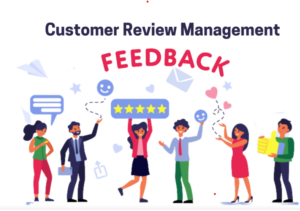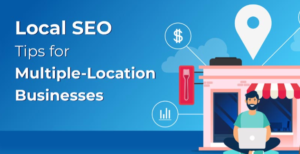What is Local SEO?
Local SEO is a special part of search engine optimization. It helps businesses show up better in location-based searches. It helps businesses show up in map listings, local search results, and geographic searches. This is done by improving their online presence for nearby customers. Local SEO tactics include managing Google Business Profile listings. They also involve building local citations and gathering customer reviews. Creating content for specific locations is important too. Lastly, make sure your Name, Address, and Phone (NAP) information is consistent across the web. Effective local SEO helps businesses reach customers looking for nearby products or services. This increases foot traffic and local sales.
For businesses with multiple locations, like franchises and retail chains, localized SEO is very important. It helps each location rank well in local searches. Multi-unit companies have different challenges than single-location businesses. They must manage Google Business Profiles (GBPs), local citations, location pages, and NAP (Name, Address, Phone Number) consistency.
This guide explains the best SEO practices for businesses with multiple locations. It offers strategies to boost visibility, attract local customers, and improve search rankings in all areas.
1. Optimizing Google Business Profiles (GBPs) for Multiple Locations
A well-optimized **Google Business Profile** (formerly Google My Business) significantly impacts local rankings and visibility. Multi-unit businesses must ensure each location has an **individual GBP listing** with accurate and optimized details.
Best Practices for GBP Optimization:
✔ Claim & Verify Each Location: Ensure each business location is verified to gain full control over its listing.
✔ Unique Descriptions: Avoid duplicate descriptions across multiple locations. Use location-specific details while maintaining brand consistency.
✔ Consistent NAP Information: Ensure **Name, Address, and Phone Number** match across GBPs and other directories.
✔ Local Categories & Attributes: Select **the most relevant business categories** for each location to improve search relevance.
✔ Regular Updates & Posts: Use Google Posts to share promotions, events, and updates **specific to each location**.
✔ Encourage Customer Reviews: Actively request reviews and respond to them to boost engagement and credibility.
Example: A national fitness chain improves each location’s GBP. They add unique photos, class schedules, and instructor bios. This helps boost local engagement and rankings.
2. Creating High-Performing Location Pages
Each location should have its own dedicated landing page rather than listing all addresses on a single page. These pages must be SEO-optimized to rank in local searches.

Essential Elements of an Optimized Location Page:
✔ Unique Content for Each Location: Avoid duplicate content by incorporating local details, customer testimonials, and services offered.
✔ Localized Keywords: Use search terms like “plumbing service in Houston” or “best pizza in Chicago” naturally within the content.
✔ Embedded Google Map: Improves local SEO and user experience.
✔ Consistent NAP Data: Matches GBP and citation listings.
✔ Structured Data Markup: Implement Local Business schema markup to help Google better understand location-specific information.
✔ Call-to-Action (CTA): Each page should have a clear CTA to drive conversions, such as booking appointments, requesting quotes, or calling the location.
Example: *A dental franchise with 50+ locations creates unique service descriptions, doctor bios, and local community involvement details for each page, leading to higher engagement and rankings.*
3. Managing Local Citations & Directories
Consistency across online business directories is a major ranking factor for local SEO. Multi-location businesses must maintain accurate and up-to-date citations on relevant platforms.

Key Local Citation Strategies:
✔ Submit Each Location to Key Directories: List each business location on Yelp, Bing Places, Apple Maps, Facebook, Foursquare, and industry-specific directories.
✔ Maintain NAP Consistency: Ensure every directory has identical business details to avoid confusing search engines.
✔ Use Data Aggregators: Platforms like Yext, Moz Local, and BrightLocal distribute location data to multiple directories efficiently.
✔ Monitor & Correct Errors: Regularly audit listings to identify duplicate or incorrect citations and update as necessary.
Example: *A restaurant chain ensures NAP consistency across Google, Yelp, and TripAdvisor, reducing ranking fluctuations and improving online credibility.*
4. Localized Content Marketing Strategies
Content plays a crucial role in localized SEO, helping businesses engage with their local audience and rank for geo-specific search queries.

Content Strategies for Multi-Location SEO:
✔ Local Blog Posts: Publish content related to community events, local partnerships, and regional trends.
✔ Localized Social Media Engagement: Share location-specific posts, promotions, and user-generated content.
✔ FAQs for Each Location: Address common questions such as parking, store hours, and special services on individual location pages.
✔ Geo-Targeted Landing Pages: Run PPC and organic campaigns targeting different service areas.
✔ Video Content: Create behind-the-scenes footage, customer interviews, and community involvement videos.
Example: A home services franchise publishes localized blog content on “How to Prepare for Winter in Boston” vs. “Best Summer Home Maintenance Tips in Florida,” boosting local search rankings.
5. Local Review & Reputation Management
Customer reviews are a major ranking factor for local search. Multi-location businesses must actively manage and respond to reviews to build trust and improve visibility.

How to Manage Reviews for Multi-Unit Businesses:
✔ Encourage Reviews on GBP & Yelp: Send follow-up emails or SMS to satisfied customers requesting reviews.
✔ Respond to All Reviews (Positive & Negative): Engage with customers to show responsiveness and professionalism.
✔ Use Review Management Tools: Platforms like Podium, ReviewTrackers, and Birdeye help manage reviews across multiple locations.
✔ Feature Positive Reviews: Showcase testimonials on location pages and social media for added credibility.
✔ Monitor Brand Mentions: Use tools like Google Alerts and Brand24 to track online discussions about your business.
Example: A retail chain improves its online reputation by responding to 100% of reviews within 24 hours, increasing customer trust and local rankings.
Final Thoughts
Optimizing local SEO for multi-unit businesses requires a strategic approach to GBP management, location pages, citation consistency, localized content, and reputation management. By following these best practices, businesses can increase local visibility, drive foot traffic, and outperform competitors in every market. Check out our Local SEO Services to discuss how we can help.
💡 Next in This Series: Stay tuned for our next article on Innovative Content Strategies That Win in SEO.
Key Takeaways:
✅ Google Business Profile Optimization: Each location needs a separate, fully optimized GBP listing.
✅ Dedicated Location Pages: Unique, content-rich pages improve local rankings & user experience.
✅ Local Citations & Directory Listings: Consistency across platforms like Yelp, Apple Maps, and industry directories boosts credibility.
✅ Localized Content Marketing: Blog posts, FAQs, and social media engagement enhance local relevance.
✅ Review & Reputation Management: Managing customer feedback improves trust and local SEO rankings.
By using these strategies, businesses with many locations can lead in local search results. They can attract customers who are ready to buy and grow their SEO success in different areas







